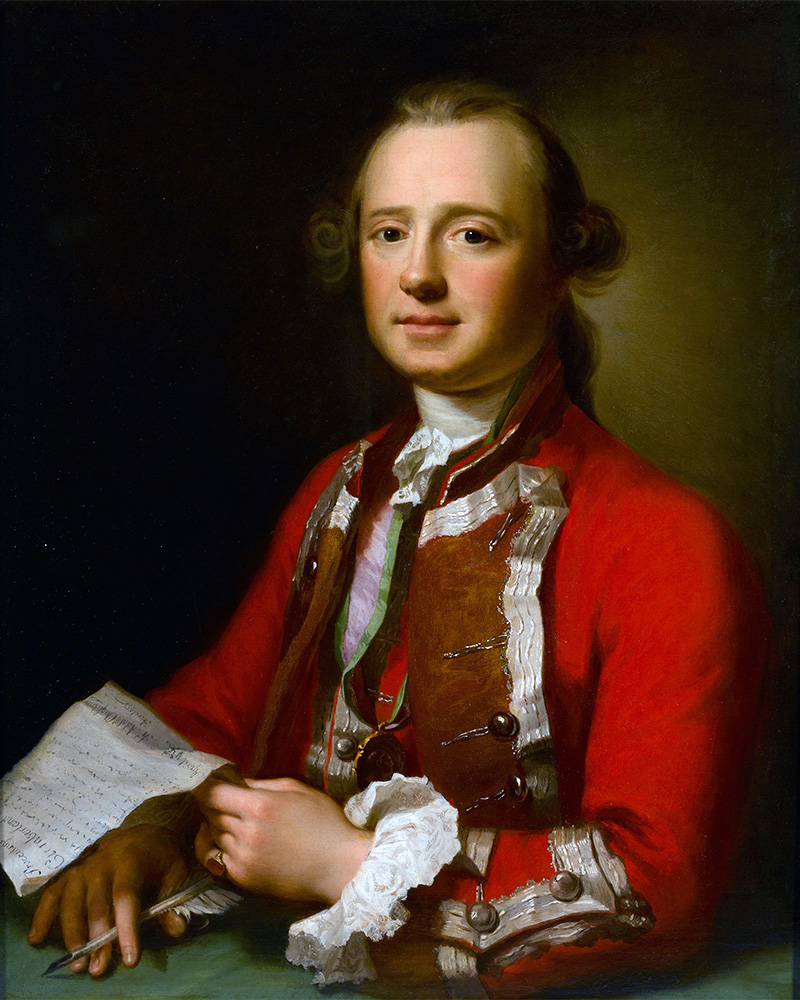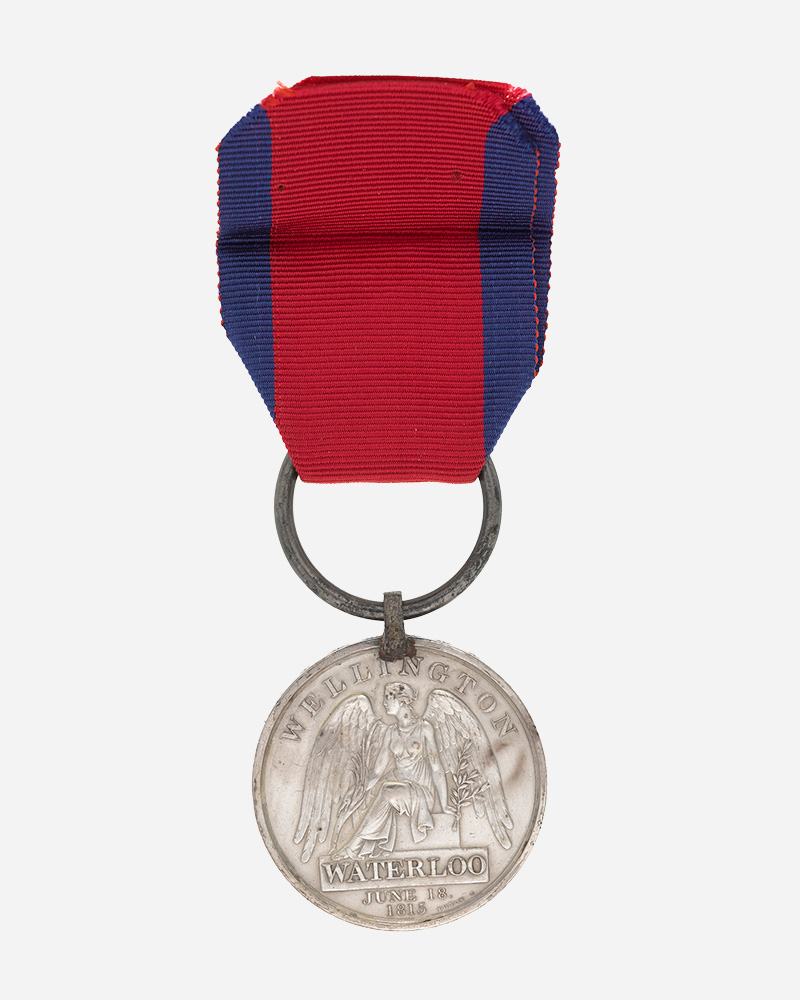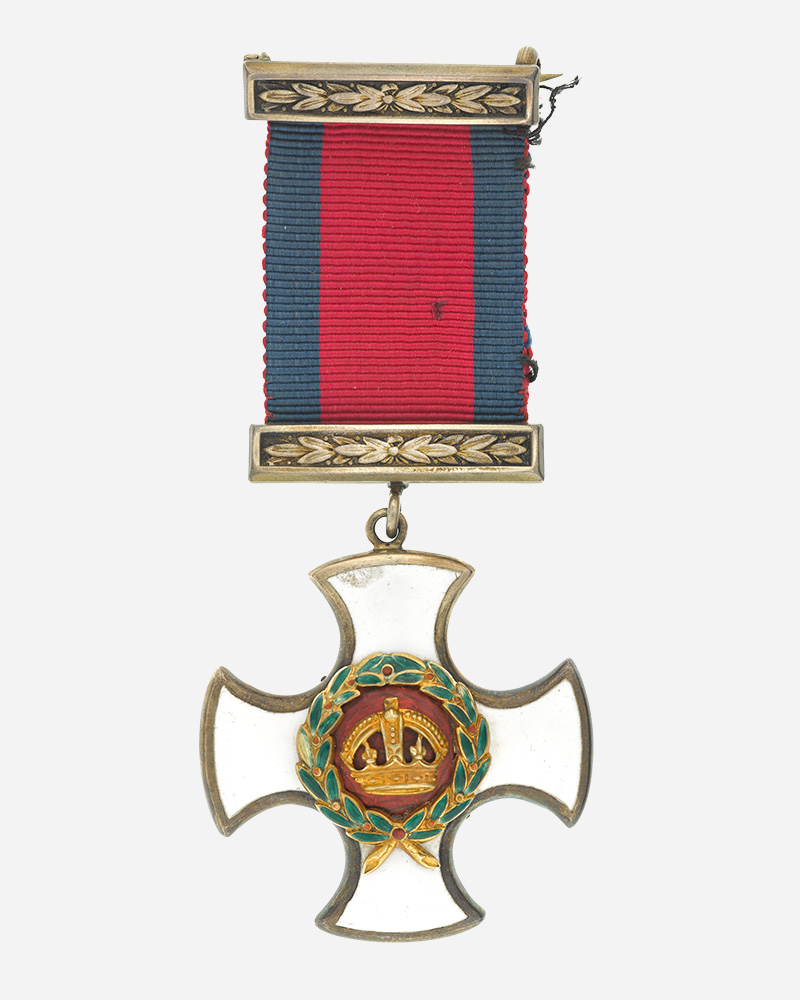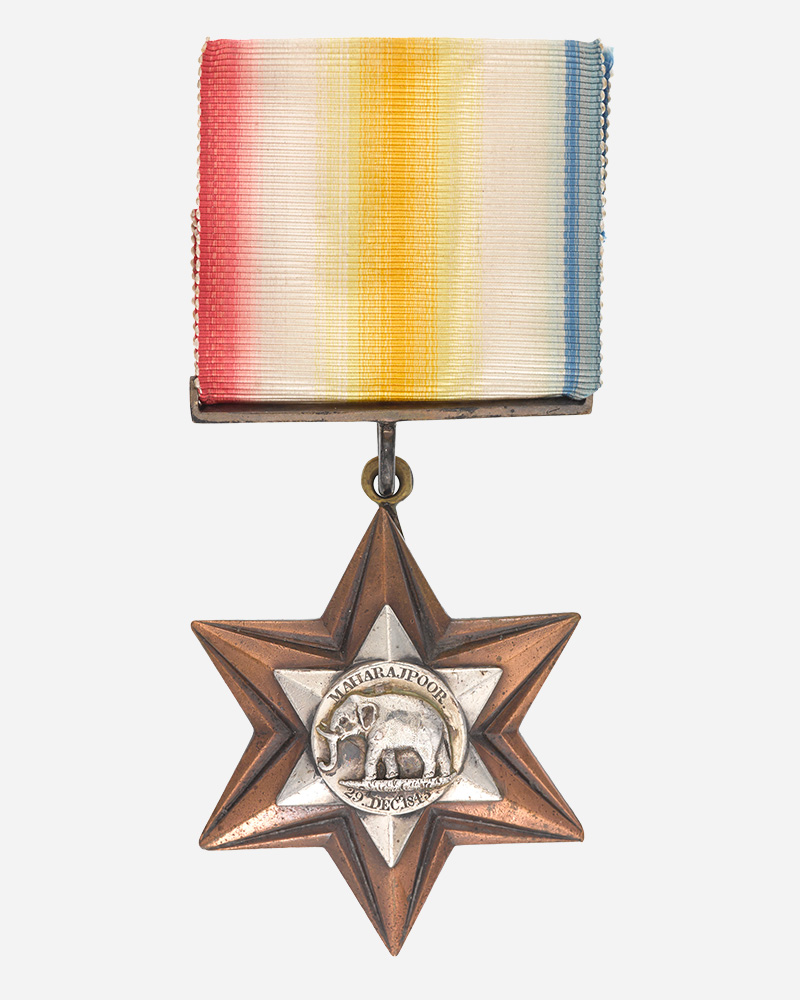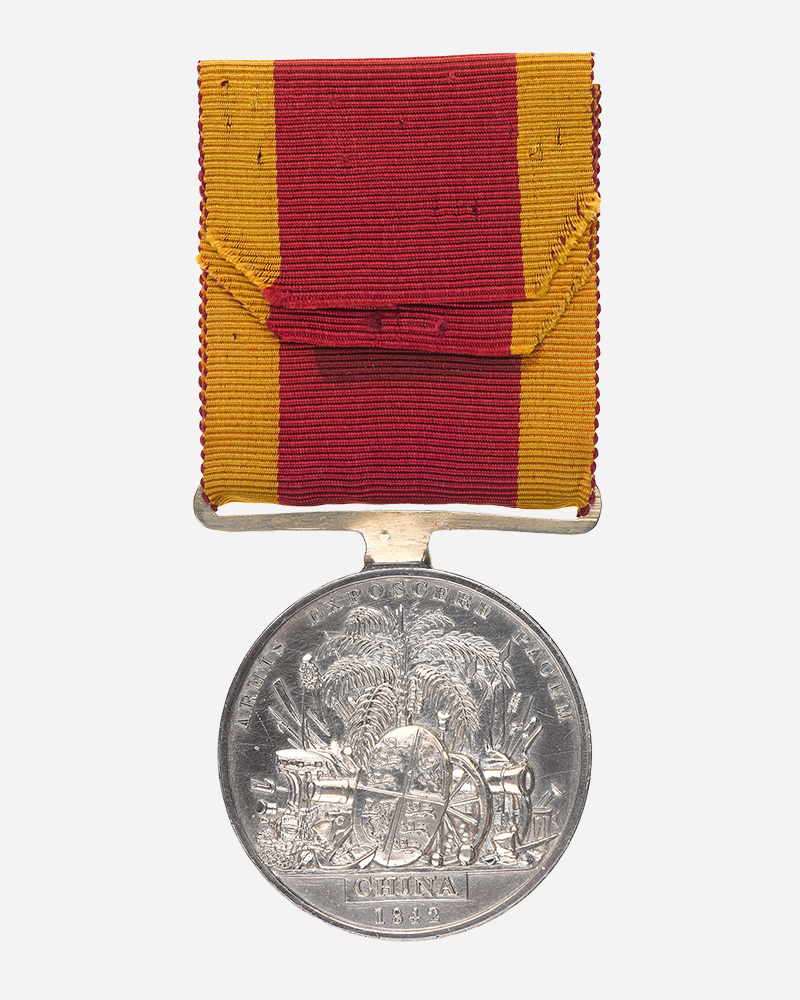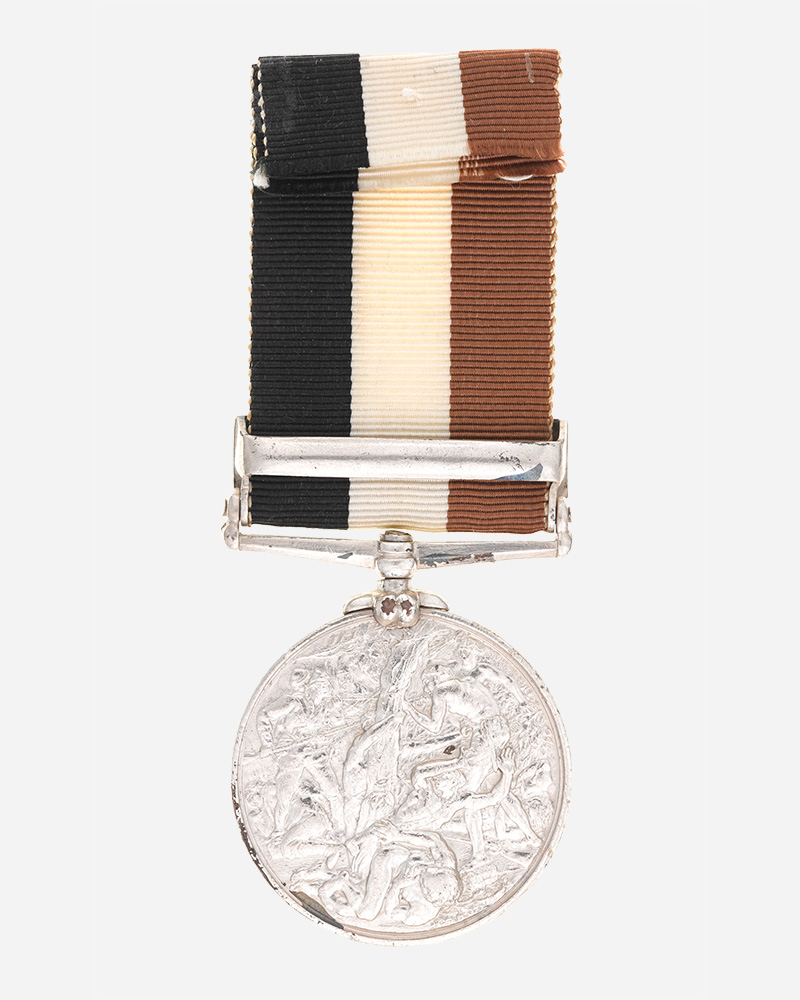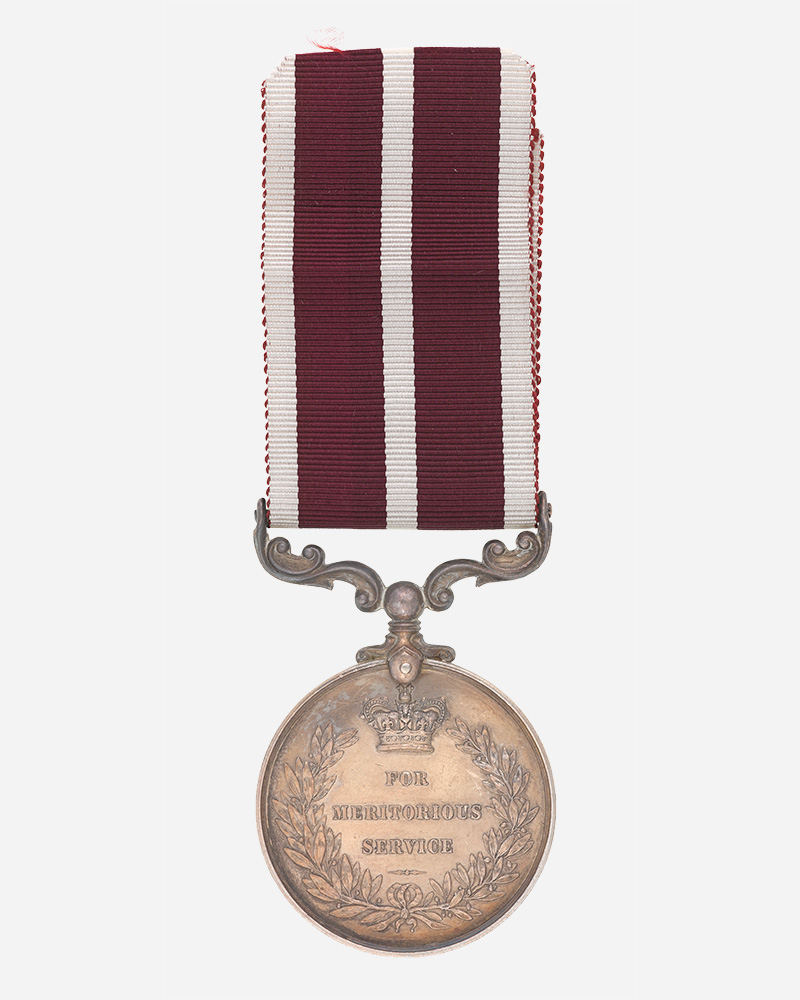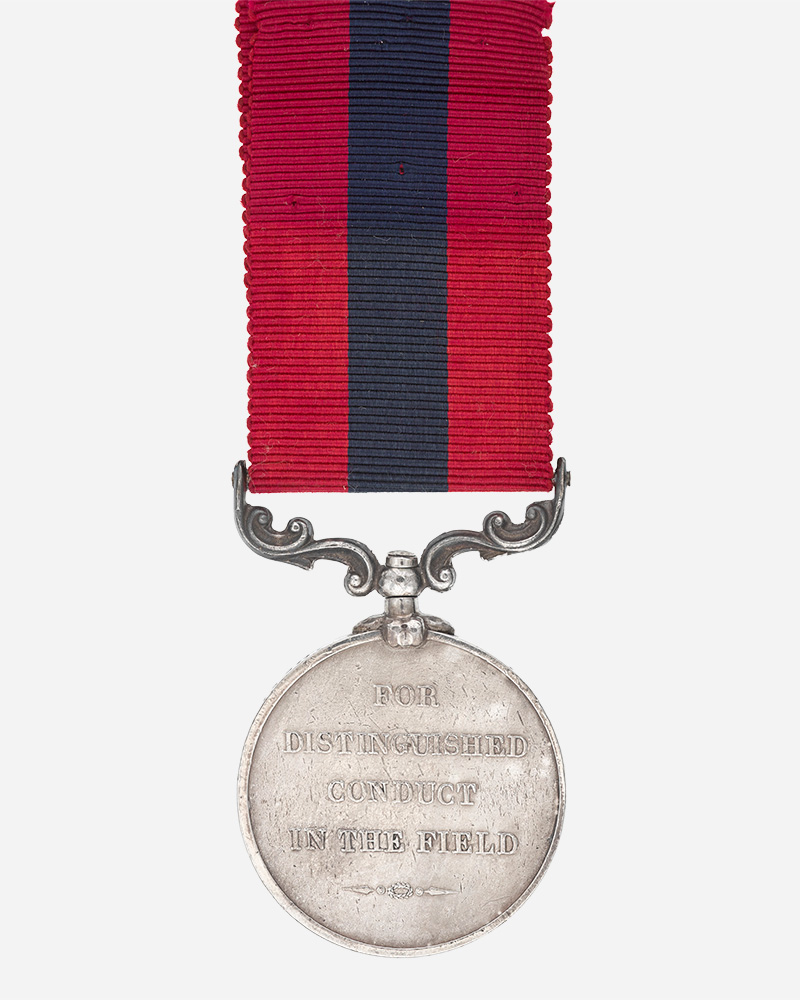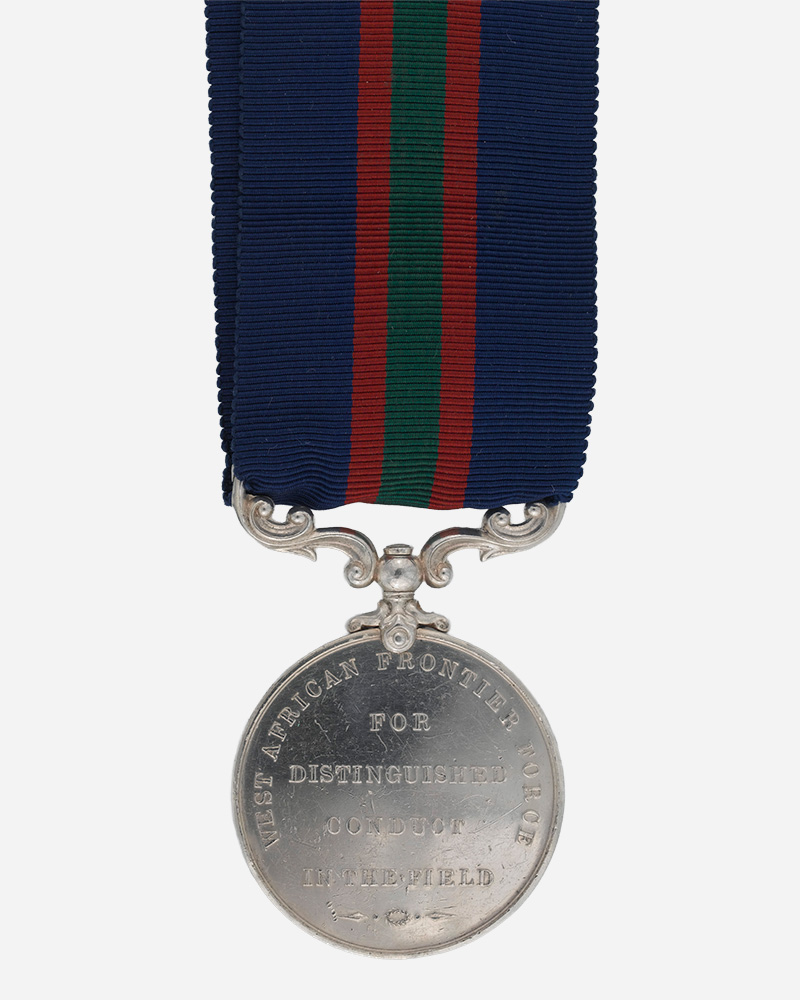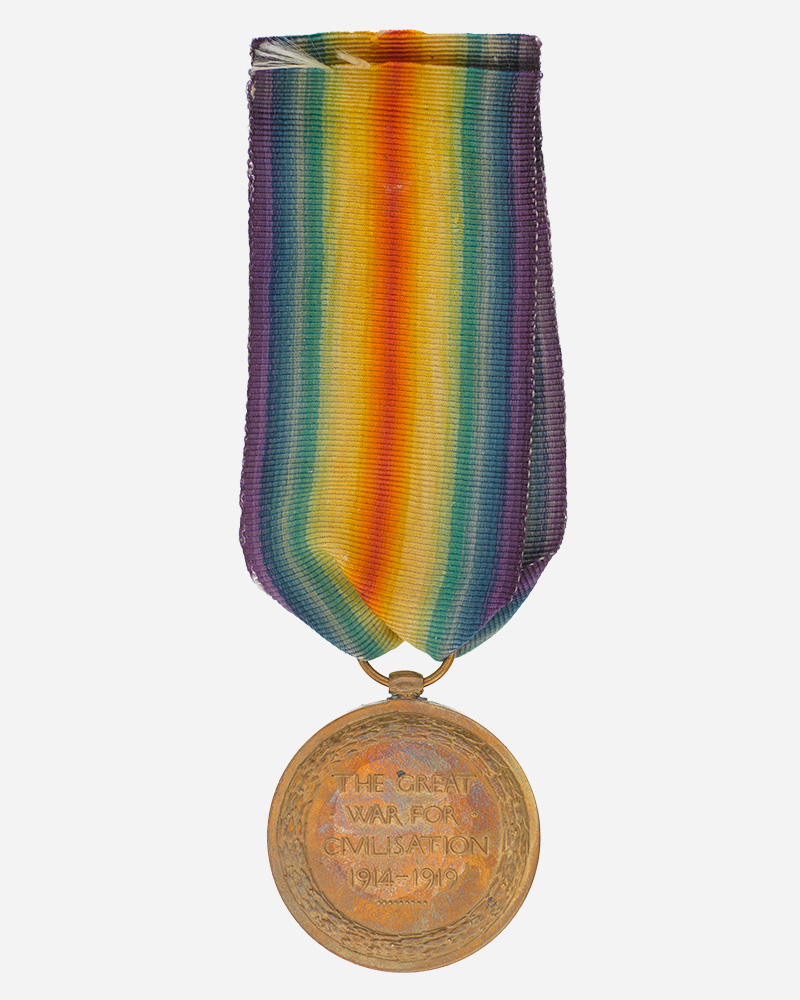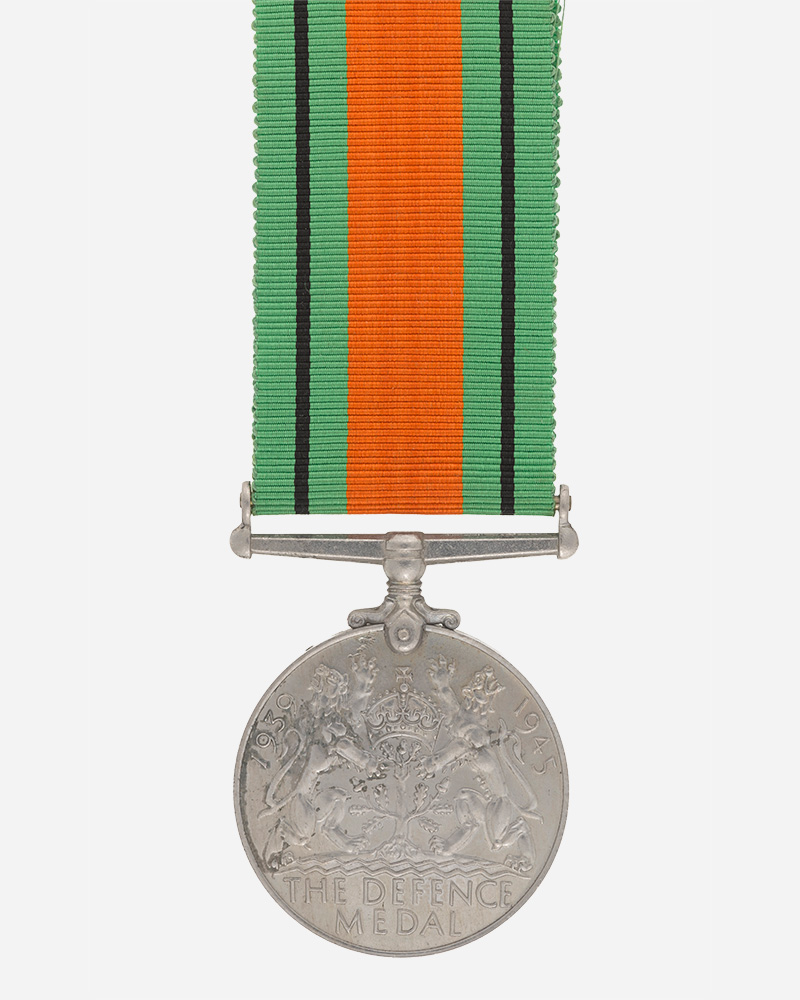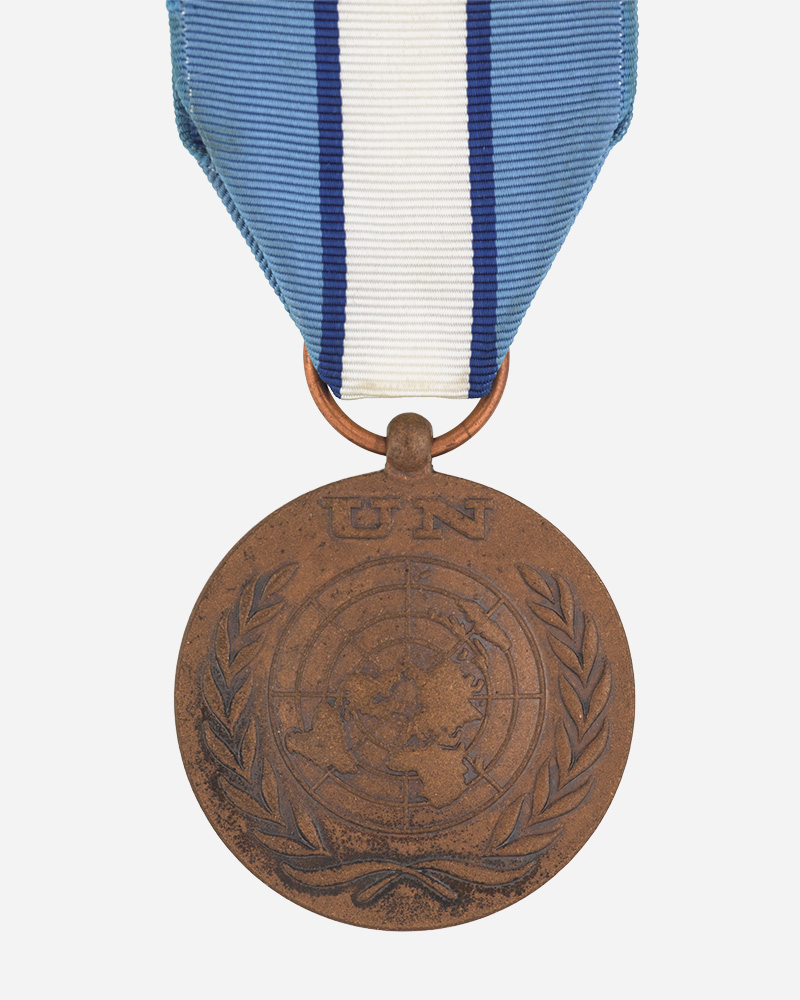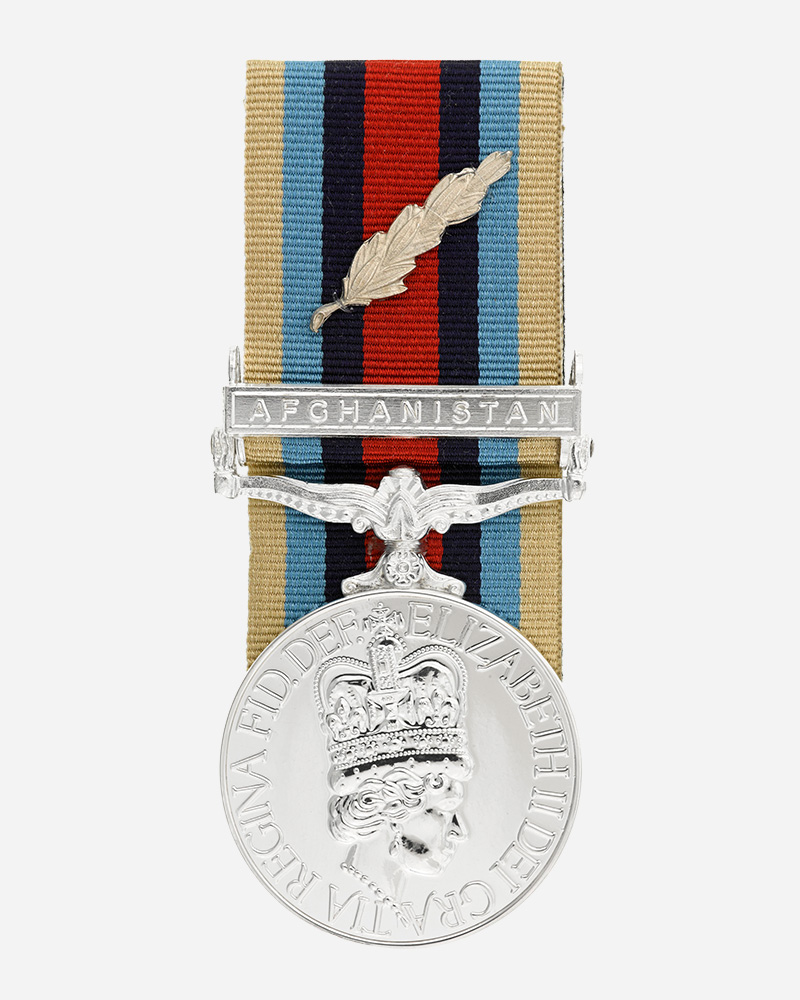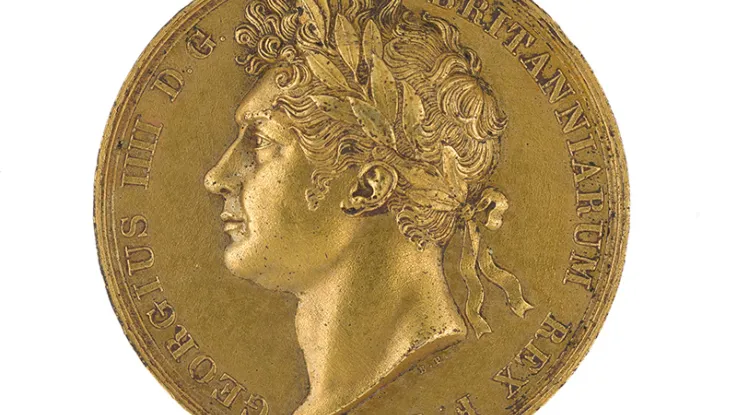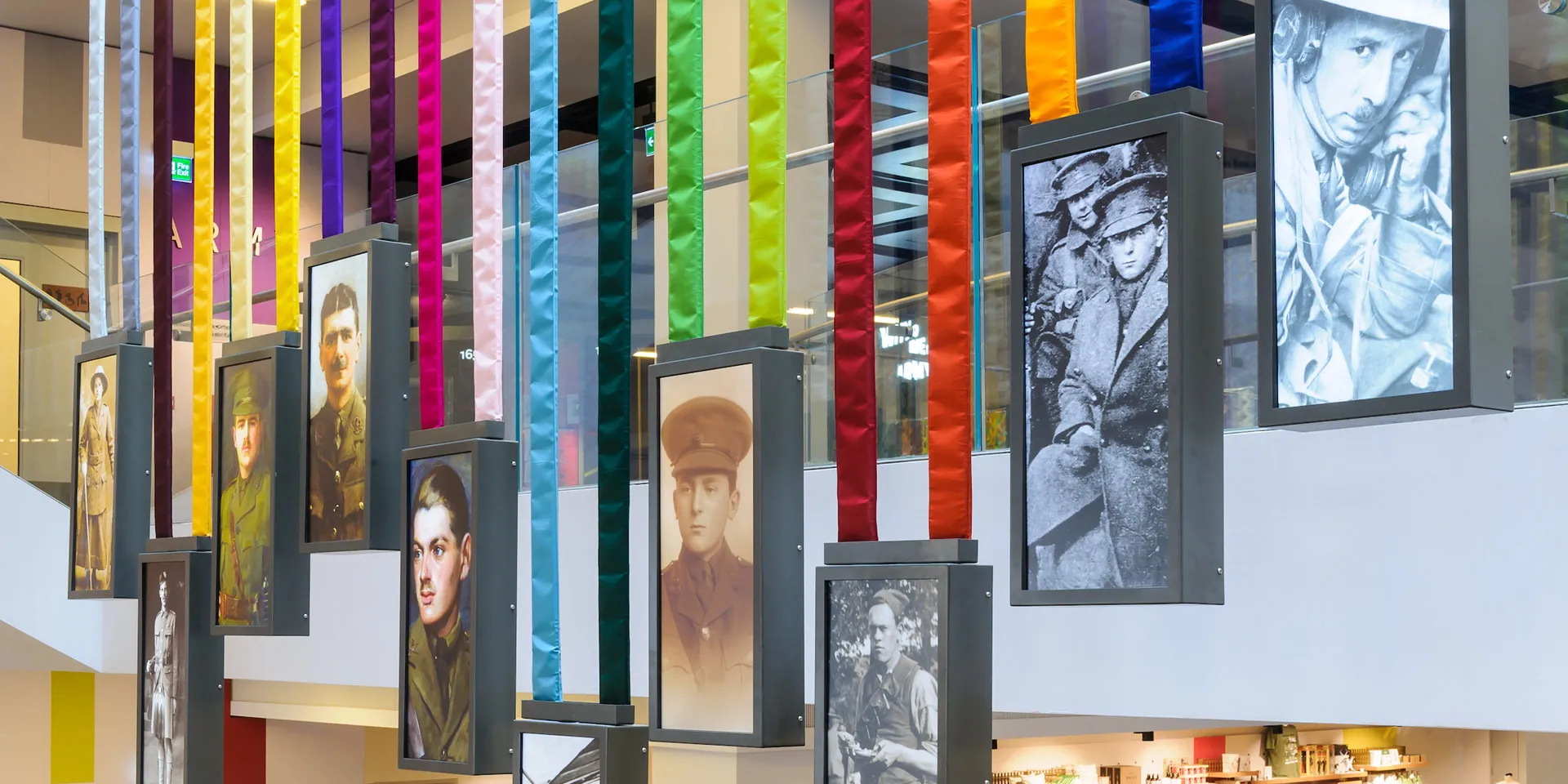
Kaleidoscope of colour
Visitors to the National Army Museum can't fail to notice the colourful fabric installation suspended from the ceiling of the Atrium. This decorative feature, repeated along the gallery floors, is inspired by the medal ribbons worn by members of the armed forces in a tradition dating back to the 1700s.
But what are the origins of these historic ribbons? And what symbolic meanings do their colours continue to convey?
Symbolism
The colours used in medal ribbons have their origins in heraldry, which draws on a limited palette to represent different chivalric qualities.
Purple represents royalty; blue represents personal strength; black represents loyalty; green represents love; and red represents military strength and courage. Red and blue often feature in British military medal ribbons, particularly with medals awarded for gallantry.
Ribbons have become increasingly colourful over time, often drawing on the national colours of allied states or the country in which an operation took place.
Colours are also associated with each branch of the armed forces: the British Army's colour is red; the Royal Navy's is dark blue; and the Royal Air Force's is pale blue. These are commonly used to indicate a service's involvement in a particular conflict.
Oldest medal ribbon
The first medal known to have been worn suspended from a neck ribband (or ribbon) is the Cumberland Society Medal. Created in 1746, it was issued to selected officers who served under the Duke of Cumberland at the Battle of Culloden.
Its ribbon comprises crimson and green stripes and was approved by Cumberland's father, King George II.
The only example of a Cumberland Society Medal thought to retain its original ribbon - owing to its impeccable family provenance - has recently gone on display in the National Army Museum's Formation gallery.
Military Ribbon of Great Britain
This ribbon is crimson with a dark blue stripe to either side. It accompanied several medals issued to officers and soldiers in the early 1800s.
The Maida Gold Medal was instituted by King George III in 1808. It was issued to around 20 senior officers to commemorate the Battle of Maida (1806), the British Army's first victory over the French since the accession of Emperor Napoleon I.
The Army Gold Medal and the Army Gold Cross were both issued to officers who served at key battles of the Peninsular War (1808-14). The Military General Service Medal, instituted in 1847, was issued to surviving officers and other ranks who had served in that same conflict.
The Waterloo Medal was issued to officers and other ranks who served at the Battle of Waterloo (1815).
Despite some variation in the width of the stripes, these ribbons are easy to confuse. For that reason, they were not permitted to be worn without their associated medal.
The Distinguished Service Order, instituted much later in 1886, has a similar ribbon design.
Military Ribbon of India
Sometimes known as the 'Sunrise in the East' or rainbow pattern, this ribbon is said to reflect the colours in the sky over India at dawn and the rays of the rising sun. It comprises red, white, yellow and pale blue stripes, which gradually blend into each other.
It was used with medals issued by the East India Company for military service in the final stages of the First Afghan War (1838-42), as well as the conquest of Scinde (1843) and the campaign in Gwalior (1843).
Similar to the Military Ribbon of Great Britain, it was almost impossible to know which campaign a soldier had served in if the ribbon was worn without its associated medal.
China War Medal ribbons
Issued with medals for the First China War (1839-42), the Second China War (1856-60) and the Boxer Rebellion (1900), these ribbons are red with yellow edging, representing the national colours of Britain and Imperial China.
The Second China War Medal was originally issued with a ribbon comprising five equal stripes of green, white, red, yellow and blue with red edging. Very few examples appear to have survived, suggesting that only a small number of medals were issued with this ribbon or that the ribbons were subsequently replaced with the red-and-yellow version.
Victoria Cross ribbons
Instituted in 1856, the Victoria Cross (VC) originally had two different ribbons: blue for Royal Navy awards and crimson for Army awards.
Following the formation of the Royal Air Force in 1918, it was decided that instead of a service-specific ribbon, all VC ribbons would be crimson. Naval personnel were supposed to return their blue ribbons and have them replaced with a crimson version. But many opted not to do so.
Central Africa Medal ribbon
The ribbon design for the Central Africa Medal was a source of controversy when it was first publicised. It comprises three equal stripes of black, white and brown to represent the skin tones of the African, European and Indian troops who served in campaigns in central and eastern Africa between 1891 and 1898.
Intended as a mark of respect, this design was specifically requested by senior officer Sir Redvers Buller VC to recognise the contributions made by personnel from across the Empire.
The issue that arose was due to a false rumour reaching personnel in Africa, which suggested the brown stripe was effectively yellow. This led to complaints from soldiers of the Indian Army units that this colour did not represent them.
Meritorious Service Medal ribbons
Since 1977, the ribbon on medals issued for long and meritorious service has been the same for all branches of the armed forces: crimson with white edges and a white central stripe.
When the medals were first introduced in 1845, the Army used an all-crimson ribbon before adding white edges in 1916, and then the white centre stripe in 1917. The Royal Air Force originally used a half-crimson, half-pale-blue ribbon with white stripes to the centre and edges. The Royal Navy has always used the current design.
Meritorious Service Medals issued to personnel serving in British dominions, colonies and protectorates shared the same basic design, but the pattern and colour of the stripes on the ribbons varied by country.
Distinguished Conduct Medal ribbons
The Distinguished Conduct Medal (DCM) was instituted in 1854 for acts of gallantry in the field. It had a crimson ribbon with a dark blue central stripe.
Originally, it was only awarded to British personnel. But later in the 19th century, the same ribbon was used on the DCM awarded to personnel from Britain's colonies and dominions.
From the early 1900s, African soldiers serving in the West African Frontier Force or the King's African Rifles were awarded a different DCM. This used a dark blue ribbon with a central green stripe and crimson stripes to either side.
After 1942, all qualifying personnel were awarded the same type of DCM.
Allied Victory Medal ribbon
In March 1919, a committee of representatives from Britain's various First World War allies met to discuss the design of a Victory Medal. The plan was to agree a common design for a medal that each country could issue to its own personnel.
There was considerable debate regarding the design of the ribbon. The initial suggestion was to include the national colours of all allies whose armed forces had participated throughout the conflict. Understandably, this was rejected by the representatives of those nations whose personnel had not been in the field for the whole duration.
The debate concluded with the adoption of a rainbow ribbon.
Campaign star ribbons
The ribbons for the eight original Second World War campaign stars are widely believed to have been designed personally by King George VI. They symbolise the countries, operational environments and branches of the armed forces to which they were awarded.
The 1939-45 Star ribbon has three equal stripes of red, dark blue and pale blue representing the Army, the Royal and Merchant Navies, and the Royal Air Force respectively.
The gradations of blue, white and green used on the Atlantic Star ribbon represent the Atlantic Ocean. The ribbon does not include the colours of the armed forces.
Issued primarily to RAF personnel, the Air Crew Europe Star features the light blue of the sky on its ribbon, with black and yellow stripes to represent flying at night and enemy searchlights.
The Africa Star ribbon features the three stripes of the armed forces on a sand-coloured background to represent the desert. It also has a wider red stripe to indicate the Army’s leading role in the North African theatre of the war.
The Pacific Star ribbon again uses the three coloured stripes of the armed forces, but on a green background to represent the jungle environment, with a central sand-coloured stripe to symbolise beach landings.
The red and blue colours on the Burma Star ribbon represent the British and Commonwealth forces that fought in Burma (now Myanmar), north-eastern provinces of India, Hong Kong, Malaya (now Malaysia) and Sumatra (now part of Indonesia). The orange-yellow stripe represents the sun.
The ribbons for the Italy Star and the France and Germany Star use colours drawn from the relevant national flags: the red, green and white of Italy; and the red, white and blue of France, Great Britain and the Netherlands.
The Arctic Star, introduced much later in 2013, follows the same pattern as the original eight stars. Its ribbon features pale blue, dark blue and red stripes - representing the three branches of the armed forces - and a central white stripe symbolising the icy conditions experienced by eligible service personnel.
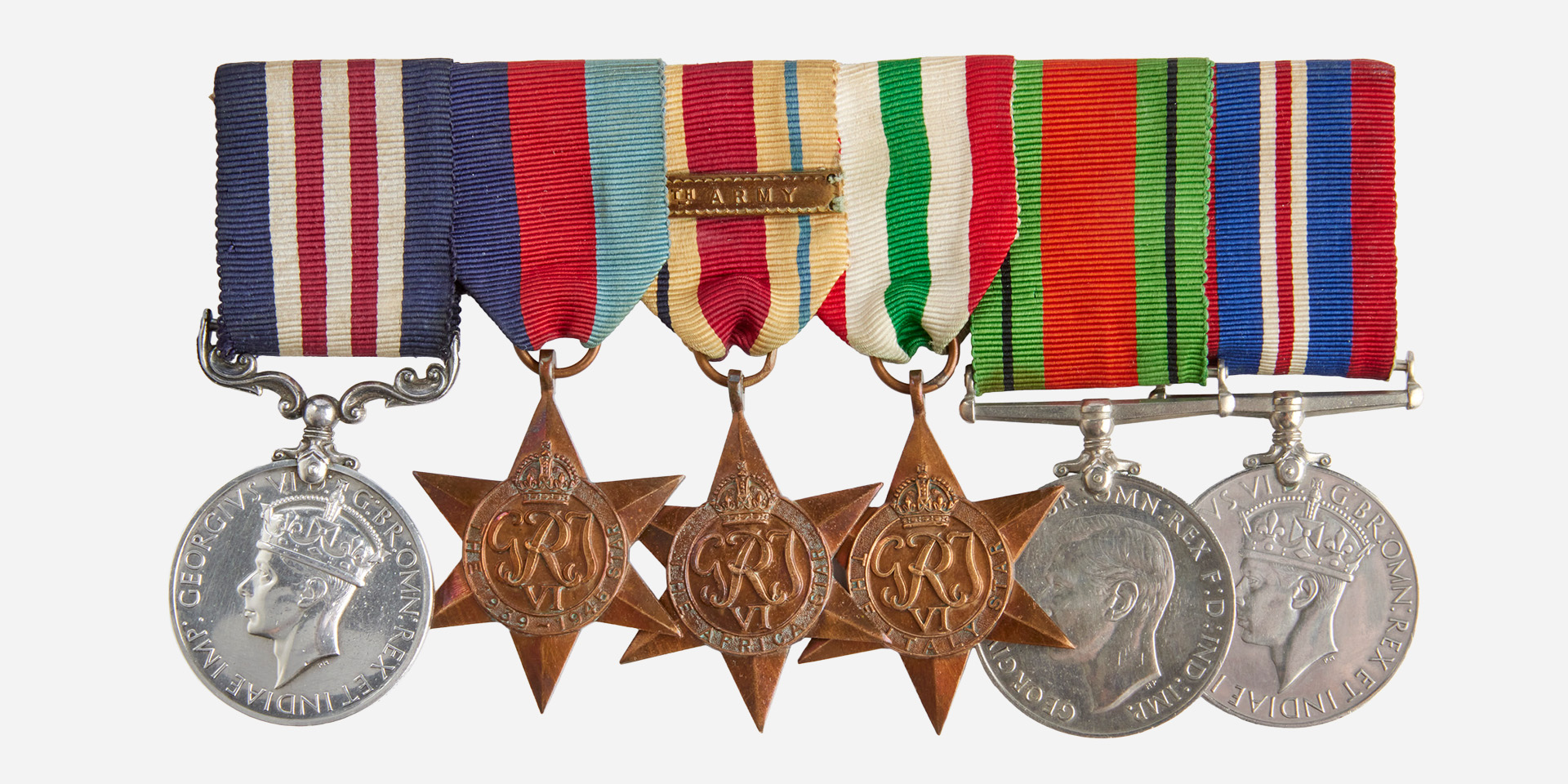
From left to right: Military Medal; 1939-45 Star; Africa Star; Italy Star; Defence Medal; British War Medal 1939-45
Defence Medal ribbon
The Defence Medal was awarded for non-operational service, often UK-based, in the armed forces during the Second World War. This included service in the Home Guard. It was also awarded to members of the Civil Defence services.
The ribbon is green to represent the verdant British countryside. The central orange stripe and the two narrow black bands to either side represent the fires caused by enemy bombing operations and the associated blackouts.
United Nations medal ribbons
The United Nations (UN) issues medals for participation in international peacekeeping, disaster-relief and humanitarian operations. All UN medals have a standard design, but can be differentiated by their ribbons.
The medal ribbons tend to feature pale blue and often white, as these are the colours of the UN. They sometimes also include colour schemes taken from the flags of the countries in which the associated operations took place.
Operational Service Medal ribbons
In 1999, a new medal was proposed to better acknowledge an individual’s long service career. This was to address criticisms that having multiple clasps on the same medal devalued the award.
A distinct Operational Service Medal would now be issued for each conflict. The design of each medal would remain the same, but the ribbon would change to represent the relevant campaign, following the approach adopted by the UN.
The ribbon for these medals always features a broad central red stripe representing the Army, flanked by a dark blue stripe representing the Royal Navy, and a pale blue stripe representing the Royal Air Force.
The stripes on the outer edge vary in colour depending on the operation - for example, green for Sierra Leone and buff for Afghanistan.
See it on display
You can find the Cumberland Society Gold Medal issued to Field Marshal Sir George Howard, along with its original ribbon, in our Formation gallery.
It's displayed alongside other items that illustrate the Army's role in defending Britain against invasion and armed revolt.


